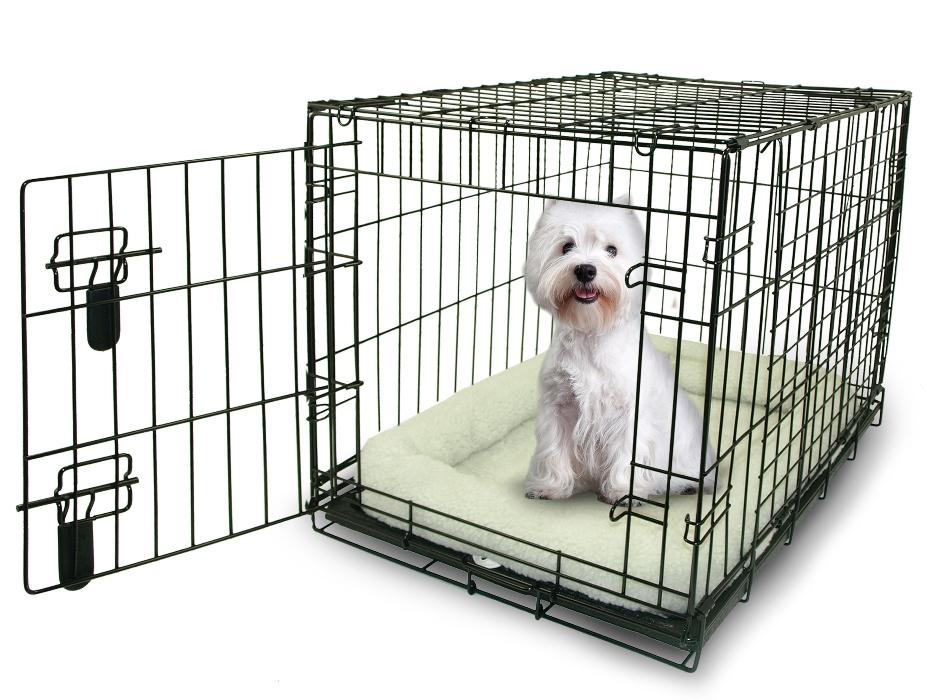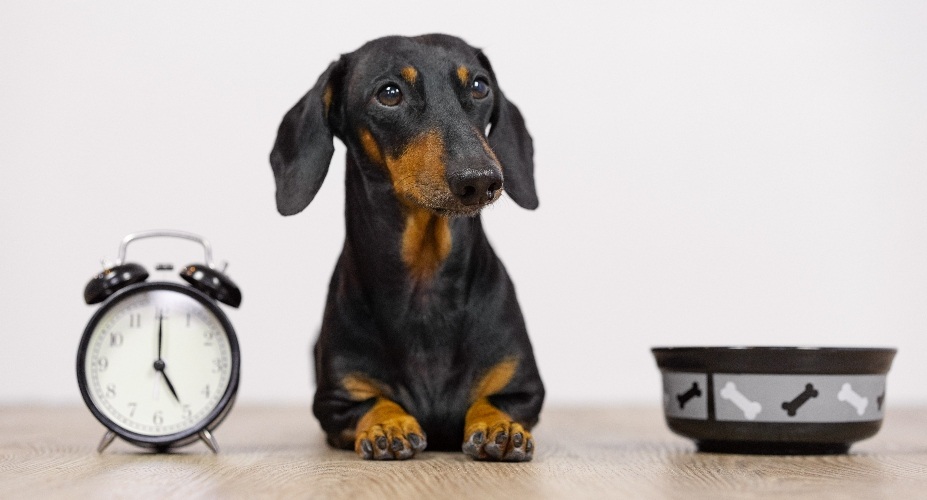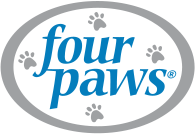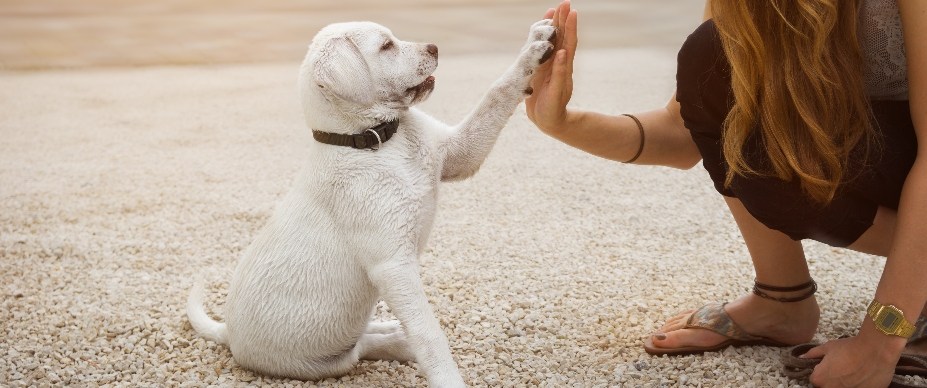How to Potty Train a Puppy
Bringing a puppy home is an exciting experience. A puppy’s energy is infectious, and their joy and playfulness can entertain the entire family. However, pet parents know puppies also require a lot of effort.
Potty training is one of the most important challenges you’ll face with a puppy. As your dog learns where and when to go potty, you’ll need to exercise patience—accidents happen!
Many dog trainers recommend that you begin potty training your puppy when they’re as young as 12 weeks. At 12 weeks, your puppy should have sufficient control over their bladder. While you can start potty training earlier, you might not see results until your puppy matures a bit more.
To successfully navigate how to potty train a puppy, follow the guidelines below.
Pick a Training Method

Different pet parents will potty train puppies in different ways. Typically, pet parents depend on either a dog training pad when learning how to house train a puppy. Each of these tools offers unique benefits during all stages of the training process.
If you plan on teaching your puppy to use training pads, you’ll need to first identify which variety best suits your furry friend's needs and your preferences. Choose pads that accommodate your dog’s size, and allow your puppy sufficient time to get familiar with the pad before they need to use it. Once your pet needs to go potty, guide them gently toward the pad and encourage them to eliminate.
Crate training is another great way to approach potty training. It's a viable solution because dogs will rarely "go” in the same place they sleep. After taking your puppy for an evening potty break, lead them to the crate for the night. After they wake up, head straight to the potty spot for morning relief.
Though your puppy might be initially resistant to the idea of a crate, eventually they will recognize it as a secure space. While puppies might occasionally pee inside the crate—which will require cleanup—this type of training still helps your puppy take a large step toward the ultimate goal.
Make a Routine

Maintaining a routine is important during puppy potty training. At a young age, your dog will begin to establish expectations for the day based on the routine you establish. Integrating training into your daily routine helps your puppy recognize appropriate times to go potty.
It doesn’t need to be complicated. If you can set a structure for your puppy’s day, they will learn when to wake up, when to eat, when to exercise, and when to sleep. Perhaps most importantly, they will learn when to expect breaks throughout the day.
Designate a Spot
Potty training is made easier if you identify a spot in your yard or home where your puppy should “go.” When your puppy indicates they need to go potty, lead them to that spot and wait. After your puppy becomes familiar with one location, leading them back to the same spot can help encourage them.
Go to the Potty Spot Frequently
Puppies need to be taken to their potty spot frequently, especially at the beginning of the training process. If you are training your dog to pee outside, for example, familiarizing them with a daily walk routine can teach them to hold their bladder in anticipation of an upcoming visit outside. If your pup has an indoor potty spot, encourage to go to that location when they have to eliminate it.
Taking your dog for frequent potty breaks can also help you minimize accidents. Consider taking a trip to the potty spot after your dog wakes up, after meals, after drinking lots of water, and immediately before bed. These trips will help them cut down on accidents, and will further help them go potty in a spot you choose.
Stick to a Feeding Schedule
You’ll find that a puppy’s bathroom breaks will closely parallel their feeding schedule. Since every puppy is different, measure how long after mealtime your dog needs to go potty. This will help you set meal times around your preferred puppy bathroom break schedule.
Any changes in your dog’s meals can impact when they need to go potty. If you change anything about your dog’s diet or feeding schedule, note the effect that it can have on their bathroom break times or frequency.
Be Mindful of Water Intake
Similar to your dog’s feeding schedule, water intake can affect bathroom break times, length, and frequency. Some puppies will return from a visit outdoors and excitedly drink large quantities of water, only to need a bathroom break minutes later. If you can, help your puppy pace their drinking habits to prevent the negative effects of hurried water intake.
Water intake will also parallel your dog’s bathroom break schedule. Some puppies prefer to drink water at the same time they eat food, while others separate the two activities. Pay close attention to both the time your puppy drinks water and the total amount of water consumed to plan bathroom breaks accordingly.
Give Rewards
As you learn how to potty train a puppy, you’ll find that positive reinforcement will greatly help your efforts. Many pups are highly motivated by praise, chew treats, and puppy chew toys. After your puppy goes potty in the right spot, holds their urine until they reach the outdoors, or reaches another milestone in the potty training process, shower them with praise.
Your puppy will quickly associate your positive reaction with their actions and work even harder to earn your approval in the future.
Supervise Your Puppy
It’s important that you supervise your puppy during the day. Puppies need supervision both to avoid indoor accidents and develop healthy interactions with other people and objects. Often, puppies will chew objects and nip humans until they are lovingly taught otherwise.
While there’s nothing wrong with giving your puppy a little freedom, make sure you’re aware of how full your puppy’s bladder is at any given time. Your puppy will communicate with you in a variety of ways throughout the day, and it’s up to you to recognize and interpret those signs.
One of the reasons why your dog goes potty in the wrong spot might be simply because you’re missing the signs they give. Common indications that your puppy needs to eliminate can include:
- Crying, barking, or whining
- Pacing or walking in circles
- Sitting by the door
- Scratching at the door
- Sitting expectantly in front of you
- Trembling or shaking
These and other signs might only precede an accident by a few minutes, so make sure while supervising your dog that you pay close attention to their body language and behavior.
Prepare for Accidents
Accidents will happen while you potty train your puppy. Even if your training goes well, your puppy will still likely have accidents around the house while they learn your expectations for them. When your puppy does have an accident, your response can have a large effect on their future behavior.
Though it might be tempting, avoid yelling or raising your voice when addressing your puppy. Aggressive contact with your puppy is sometimes even more damaging, as your young dog can come to fear the potty training process—or even you.
To stop indoor accidents, respond amiably but firmly after your dog urinates in the house. Take your dog to their potty spot to finish even if they appear to be done. This will help improve their association between the outdoors and relief.
Clean Thoroughly
If your dog does urinate on the floor, it’s important to follow a thorough cleanup process. Cleaning up after your dog can feel like a repetitive chore, but it will help you sanitize your home and prevent germs from spreading.
Thankfully, several helpful dog cleanup products make the process easy. These can include potty training spray, which helps you train your puppy to “go” in a pee pad tray or another place you designate.
Treat any urine spots with an odor-destroying cleaning agent that helps you remove pet stains before they become permanent.
Ask for Help
Potty training a puppy can be a difficult, long-lasting task. While it’s a rewarding process that helps you bond with your dog, it can also cause stress. Don’t hesitate to ask for help during the puppy potty training process if you feel you need it.
For the best results when potty training your puppy, stay consistent in your approach. Supervise your puppy whenever you can, even if it means asking someone else to watch your dog while you’re away. If you have to leave your puppy alone for more than a few hours, find someone willing to give your dog breaks as frequently as you would.








